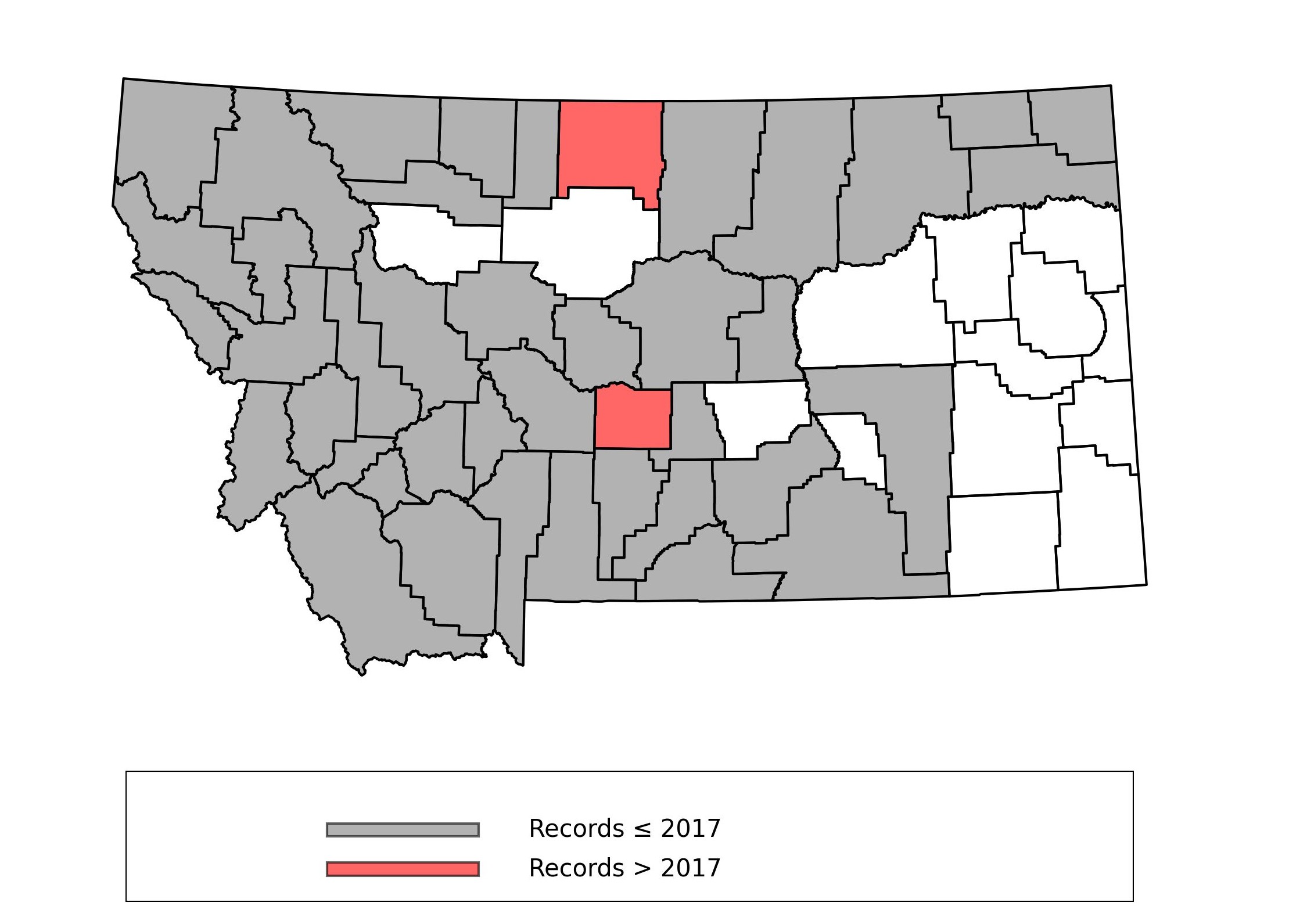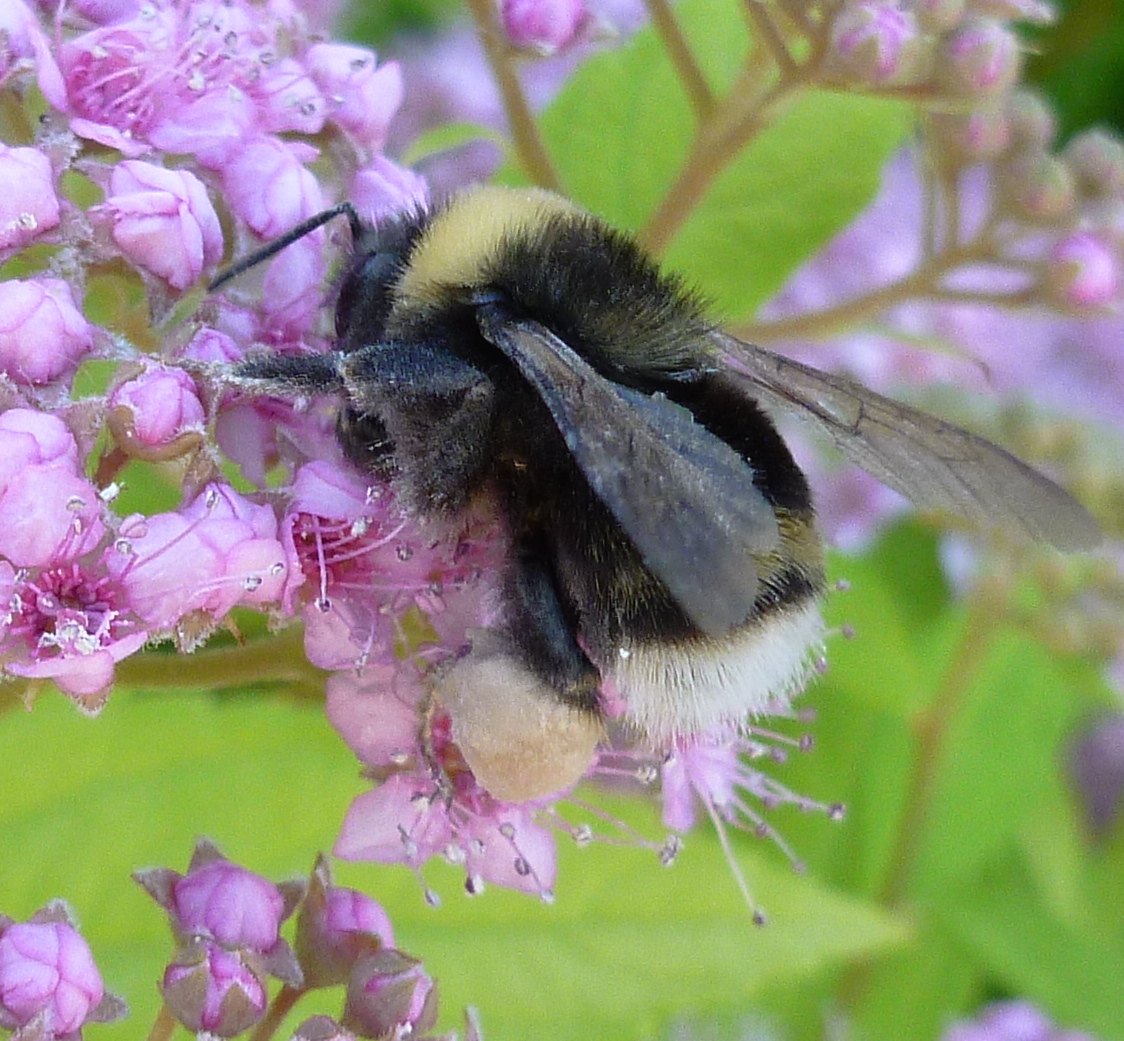Bumble Bees of Montana
Bombus (Bombus) occidentalis Greene, 1858 Western Bumble Bee
The range of B. occidentalis extends through the Mountain West from the Pacific Coast to the Great Plains, north
to Alaska (Williams et al. 2014). This species was formerly one of the most common bees in the West and was
even reared for commercial use (Cameron et al. 2011). However, since the 1990s, its range has contracted, populations in California
and British Columbia have experienced sharp declines (Williams et al. 2014), and it is now recommended by the IUCN for “Vulnerable” status (Hatfield et al. 2015b).
Montana Distribution: Records from Dolan et al. (2017) (gray) with correctionsand additional records added after publication (red).
 |
Photographer: C. M. Delphia |
Diagnosis
Bombus occidentalis is one of the most easily identified species in the state. It has a cheek that is shorter than wide and white or yellow hairs on abdominal T5 (and usually T4). Abdominal T1 and T6 are always black, T2 is usually black at least towards the back, and T3 may be black or yellow.
Similar Species
This species is most easily confused with B. terricola in Montana, but B. terricola can be distinguished by always having yellow hairs on both T2 and T3. Though not yet recorded from the state, B. cryptarum is another species that could be confused with B. occidentalis. Bombus cryptarum always has black hairs on T1, yellow hairs on T2, and black hairs on T3.

